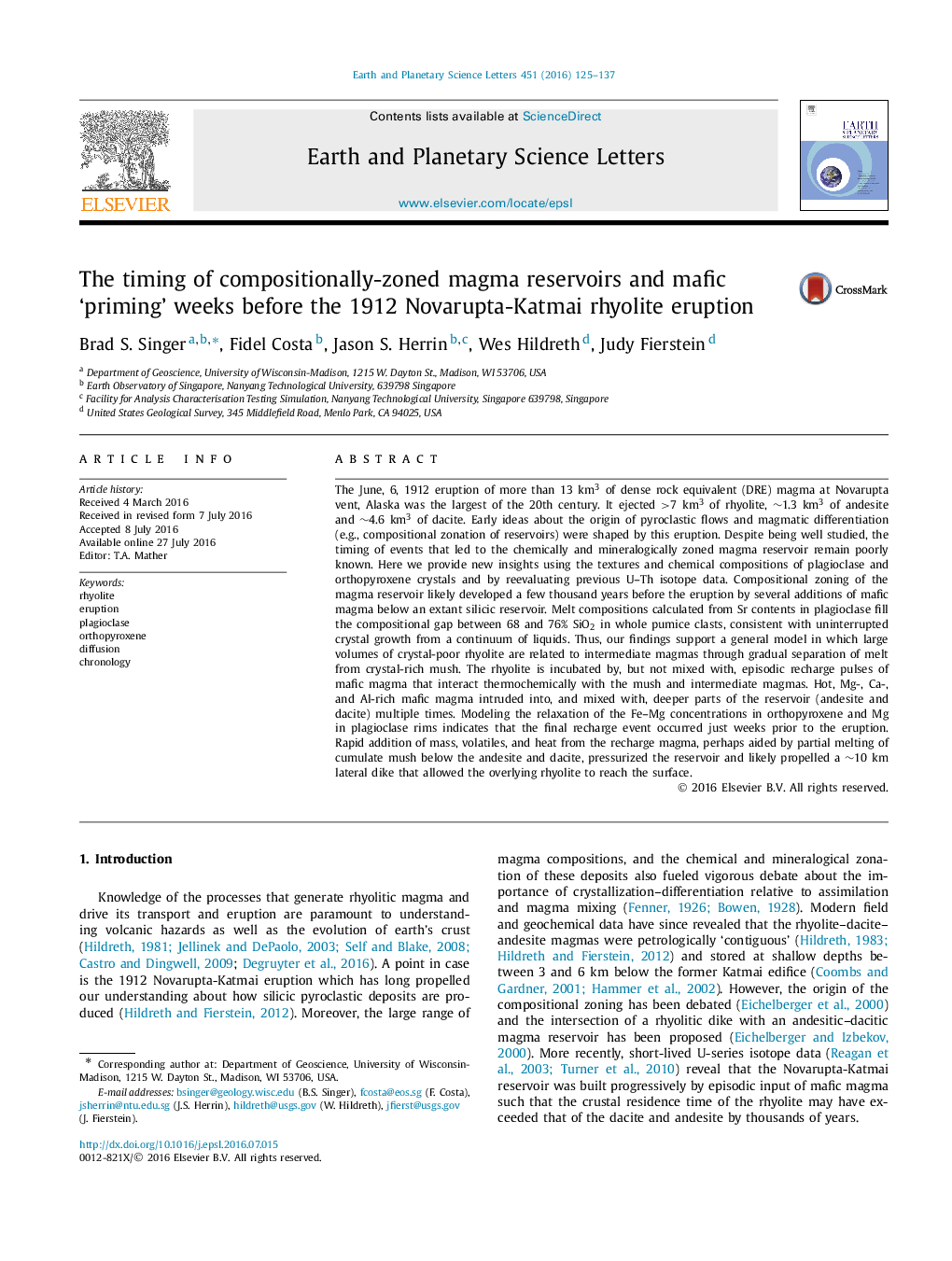| کد مقاله | کد نشریه | سال انتشار | مقاله انگلیسی | نسخه تمام متن |
|---|---|---|---|---|
| 6427256 | 1634705 | 2016 | 13 صفحه PDF | دانلود رایگان |
عنوان انگلیسی مقاله ISI
The timing of compositionally-zoned magma reservoirs and mafic 'priming' weeks before the 1912 Novarupta-Katmai rhyolite eruption
ترجمه فارسی عنوان
زمان بندی مخازن ماگمای مخلوط شده و هفته های پیش از ماتریکس قبل از فوران نااریپتا کاتما ریولیت 1912
دانلود مقاله + سفارش ترجمه
دانلود مقاله ISI انگلیسی
رایگان برای ایرانیان
کلمات کلیدی
ریولیت، فوران پلاژیوکلاز، اورتوپیروکسن، انتشار تاریخچه
موضوعات مرتبط
مهندسی و علوم پایه
علوم زمین و سیارات
علوم زمین و سیاره ای (عمومی)
چکیده انگلیسی
The June, 6, 1912 eruption of more than 13 km3 of dense rock equivalent (DRE) magma at Novarupta vent, Alaska was the largest of the 20th century. It ejected >7 km3 of rhyolite, â¼1.3 km3 of andesite and â¼4.6 km3 of dacite. Early ideas about the origin of pyroclastic flows and magmatic differentiation (e.g., compositional zonation of reservoirs) were shaped by this eruption. Despite being well studied, the timing of events that led to the chemically and mineralogically zoned magma reservoir remain poorly known. Here we provide new insights using the textures and chemical compositions of plagioclase and orthopyroxene crystals and by reevaluating previous U-Th isotope data. Compositional zoning of the magma reservoir likely developed a few thousand years before the eruption by several additions of mafic magma below an extant silicic reservoir. Melt compositions calculated from Sr contents in plagioclase fill the compositional gap between 68 and 76% SiO2 in whole pumice clasts, consistent with uninterrupted crystal growth from a continuum of liquids. Thus, our findings support a general model in which large volumes of crystal-poor rhyolite are related to intermediate magmas through gradual separation of melt from crystal-rich mush. The rhyolite is incubated by, but not mixed with, episodic recharge pulses of mafic magma that interact thermochemically with the mush and intermediate magmas. Hot, Mg-, Ca-, and Al-rich mafic magma intruded into, and mixed with, deeper parts of the reservoir (andesite and dacite) multiple times. Modeling the relaxation of the Fe-Mg concentrations in orthopyroxene and Mg in plagioclase rims indicates that the final recharge event occurred just weeks prior to the eruption. Rapid addition of mass, volatiles, and heat from the recharge magma, perhaps aided by partial melting of cumulate mush below the andesite and dacite, pressurized the reservoir and likely propelled a â¼10 km lateral dike that allowed the overlying rhyolite to reach the surface.
ناشر
Database: Elsevier - ScienceDirect (ساینس دایرکت)
Journal: Earth and Planetary Science Letters - Volume 451, 1 October 2016, Pages 125-137
Journal: Earth and Planetary Science Letters - Volume 451, 1 October 2016, Pages 125-137
نویسندگان
Brad S. Singer, Fidel Costa, Jason S. Herrin, Wes Hildreth, Judy Fierstein,
